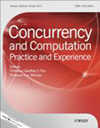Concurrency is seen in an increasing number of computing and communication systems. We have tens of millions of clients on the World Wide Web and many thousands of powerful nodes in high-end massively parallel machines (MPP). One can project continued rapid progress within ten years, Exaop performance from the Web and Petaflop capabilities in closely coupled parallel machines. This leads to a confusing rich choice of architectures with distributed memory PC clusters or Web-based computers and shared memory MPPs. These are enabled and coupled with corresponding boosts in wide-area network performance and deployment with a blurring and convergence of computing and communication. This hardware juggernaut is coupled to new languages and programming paradigms, such as Java and VRML for the Web and multithreading HPF and MPI for parallel systems. The combination of concurrent digital and optical technology is expected to create a Global Information Infrastructure (GII) that will enable new applications, and open up a new set of communication and computer software and architecture challenges. We need portable and scalable (portable to the future and to hybrid heterogeneous world-wide systems) solutions. This technology is being driven by and used in a wide range of academic, research, and commercial application areas. This use is producing a substantial amount of practical experience in those problems that are enabled or enhanced by this amazing infrastructure. There are also new computational methods, such as mobile agents, cellular automata and massively parallel neural networks, which are particularly suited to concurrent execution. There is a rapid growth in both scientific (grand challenges) and information (national challenge) applications that drive both the functionality and high performance of the base technologies. These will impact academia, business, the homes and education. New applications are also being opened up by advances in human-computer interfaces with full immersive environments becoming available, and tools to support those with disabilities broadening the reach of the computer and communication revolution. This journal will, therefore, focus on practical experience with the application of these converging trends to solve real problems. In particular, themes of our papers include: Concurrent solutions to specific problems in academia, industry and society; Concurrent algorithms and computational methods; Programming environments, operating systems, tools, concurrent languages, compilers, interpreters; Performance prediction, analysis, models and results; Applications, and algorithm and software technologies arising from the World Wide Web including novel areas, such as education; Unification of computing and communication; unification of
